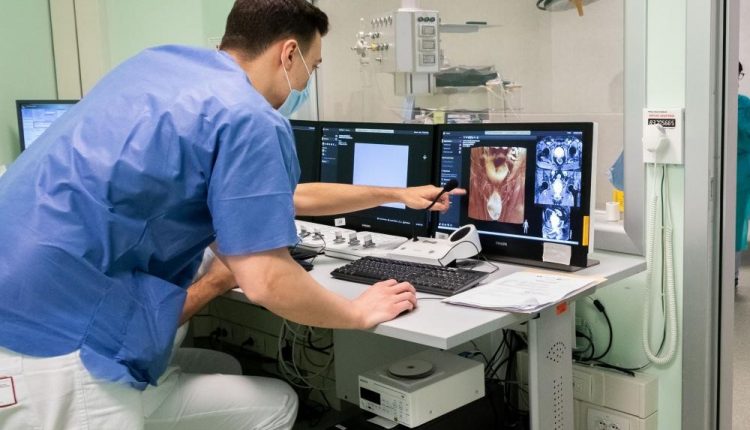
Diagnosis of prostate carcinoma
The diagnosis of prostate carcinoma is made by means of multiple biopsies of the gland under local anaesthesia
It is important to emphasise that, to date, there are no scientifically proven alternative methods for the diagnosis of prostate carcinoma with certainty
An accurate transrectal or trans-perineal ultrasound of the prostate is performed, which is useful for measuring prostate volume, calculating PSAD (PSA density) and allowing biopsy targeting, according to evolving international schemes.
Once prostate measurements have been completed, biopsy mapping of the entire gland is performed (on an outpatient or day hospital basis, depending on the patient’s characteristics).
The biopsy may also be repeated several times if the risk of cancer is still present despite a previous negative biopsy.
In many medical centres, the biopsy is performed transrectally with an associated ultrasound mapping, under local anaesthesia.
The use of ultrasound contrast medium is currently under controlled study.
Studies are also underway on the use of ultrasound contrast agents that may be useful in visualising suspicious areas.
The prostate frustules obtained (approximately 1 mm in diameter, 12 mm in length) are then analysed.
Anatomopathological analysis under the microscope makes it possible to highlight the presence of the tumour and to classify it with a score (Gleason score) that provides an assessment of its a ggressiveness.
A tumour whose cell structure is similar to normal tissue (low Gleason) is less likely to be aggressive over time, in contrast to neoplasms that have lost the cellular characteristics of normal cells (high Gleason).
Read Also
Emergency Live Even More…Live: Download The New Free App Of Your Newspaper For IOS And Android
Prostate Cancer, What Is High-Dose Brachytherapy?
Prostatitis: Symptoms, Causes And Diagnosis
Colour Changes In The Urine: When To Consult A Doctor
Acute Hepatitis And Kidney Injury Due To Energy Drink Consuption: Case Report
Bladder Cancer: Symptoms And Risk Factors
Enlarged Prostate: From Diagnosis To Treatment
Male Pathologies: What Is Varicocele And How To Treat It
Continence Care In UK: NHS Guidelines For Best Practice
The Symptoms, Diagnosis And Treatment Of Bladder Cancer
Fusion Prostate Biopsy: How The Examination Is Performed
How Dangerous Is An Enlarged Prostate?
What Is It And Why Measure Prostate Specific Antigen (PSA)?
Prostatitis: What It Is, How To Diagnose It And How To Treat It



